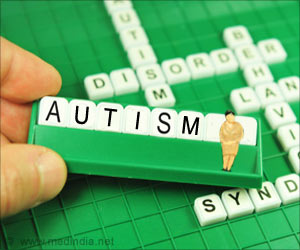The relationship between autism and sex and gender was becoming an important topic for autism research, reveals Cambridge University researchers.

The 'Reading the Mind in the Eyes' test has been used in hundreds of studies worldwide, showing reliable sex differences in typical individuals, with women on average scoring higher than men, and showing that people with autism score lower on average than people without autism. The team investigated whether men and women with autism perform differently on this test, and used it to evaluate the 'extreme male brain' theory of autism, in the largest study to date.
The theory predicted that on tests of empathy, typical females will score higher than typical males, who in turn will score higher than people with autism. The results confirmed this pattern. Senior author Meng-Chuan Lai said that there were substantial individual differences in terms of how well a person with autism performs on the Eyes test, but the social difficulties of both men and women were reflected on their test scores.
Lia added that women with autism differed more from typical women than men with autism differed from typical men, and added that the relationship between autism and sex and gender was becoming an important topic for autism research. The study is published in the Journal PLOS ONE.
Source-ANI













